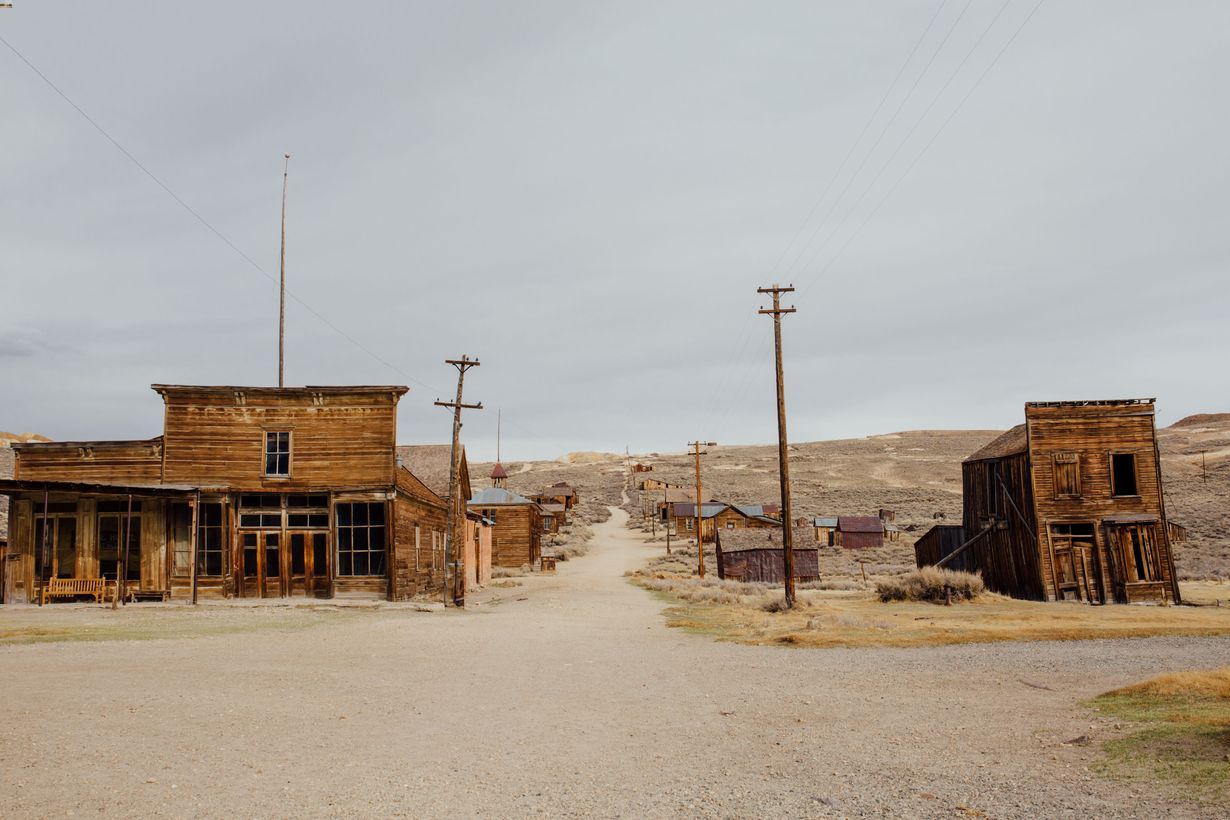Secrets Of Colorado’s Abandoned Mining Towns

Have you ever wondered what happened to Colorado's abandoned mining towns? These ghost towns, once bustling with miners seeking fortune, now stand as silent witnesses to a bygone era. Exploring these deserted places offers a unique glimpse into the past, where you can almost hear the echoes of pickaxes and the dreams of those who once lived there. From the eerie streets of St. Elmo to the crumbling structures of Animas Forks, each town has its own story to tell. Whether you're a history buff or just love a good adventure, these forgotten places are worth a visit.
Secrets of Colorado's Abandoned Mining Towns
Colorado's mining history is rich with tales of boom and bust. These abandoned towns, once bustling with miners and their families, now stand as silent witnesses to a bygone era. Let's uncover the secrets of some of these fascinating ghost towns.
Hidden Gems of Colorado's Mining Past
These towns may be deserted, but they still hold a certain charm and mystery. Each one has its own story to tell, from the gold rush days to the silver boom.
St. Elmo
- Nestled in the Sawatch Range, St. Elmo is one of Colorado's best-preserved ghost towns. Founded in 1880, it thrived on gold and silver mining. Today, visitors can explore its historic buildings, including the general store and the old schoolhouse.
Ashcroft
- Located near Aspen, Ashcroft was once a bustling silver mining town. By the late 1880s, it boasted two newspapers, a school, and 20 saloons. Now, only a few buildings remain, offering a glimpse into its vibrant past.
Independence
- Perched at 10,900 feet, Independence was one of the highest mining camps in the state. Founded in 1879, it quickly grew to house over 1,500 residents. The harsh winters and dwindling gold led to its abandonment, but the remnants still stand strong.
Tales of Boom and Bust
The rise and fall of these towns are marked by dramatic stories of fortune and failure. Each site offers a unique peek into the lives of those who once called these places home.
Animas Forks
- High in the San Juan Mountains, Animas Forks was established in 1873. At its peak, it had a population of around 450 people. The town's most famous building, the Duncan House, still stands, showcasing the resilience of its construction.
Carson
- Carson, located on the Continental Divide, was a gold mining town founded in the late 1800s. The town's remote location made it difficult to sustain, leading to its eventual desertion. Today, visitors can see the remains of cabins and mining equipment scattered across the landscape.
Teller City
- Once a thriving silver mining town, Teller City had over 1,500 residents in the 1880s. The town's decline was swift, and by the early 1900s, it was abandoned. The forest has reclaimed much of the area, but remnants of the past can still be found.
Ghostly Remains and Haunting Beauty
The eerie beauty of these ghost towns draws visitors from all over. Their haunting remains tell stories of hope, hardship, and the relentless pursuit of wealth.
Alta
- Near Telluride, Alta was a gold mining town established in 1877. It reached its peak in the 1880s but was abandoned by the early 20th century. The town's picturesque setting and well-preserved buildings make it a popular spot for photographers and history buffs.
Crystal
- Crystal, located in the Elk Mountains, was founded in 1880. Known for its rich silver deposits, the town flourished for a few decades before being abandoned. The iconic Crystal Mill, perched precariously on a rocky outcrop, remains one of the most photographed sites in Colorado.
Capitol City
- Capitol City, founded in 1877, was envisioned as the future capital of Colorado. The town never reached its lofty ambitions, and by the early 1900s, it was deserted. Today, only a few structures remain, hinting at the grand plans that never came to fruition.
Preserving History in the Rockies
Efforts to preserve these ghost towns ensure that their stories continue to be told. Visiting these sites offers a tangible connection to Colorado's rich mining heritage.
Rhyolite
Bonanza
- Bonanza, located in the northern San Luis Valley, was a silver mining town established in the late 1800s. At its peak, it had over 1,000 residents. Today, a few buildings remain, offering a glimpse into its prosperous past.
Gothic
- Near Crested Butte, Gothic was founded in 1879 as a silver mining town. It thrived for a few years before being abandoned. Now, it serves as a research center for the Rocky Mountain Biological Laboratory, blending history with scientific discovery.
Hidden Gems of Colorado's Past
Colorado's abandoned mining towns offer a unique glimpse into the state's rich history. These ghost towns, like St. Elmo, Animas Forks, and Ashcroft, tell stories of boom and bust, resilience, and change. Exploring these sites, you can almost hear the echoes of miners' picks and the hustle of once-thriving communities. Each town has its own charm, from the well-preserved buildings of St. Elmo to the high-altitude beauty of Animas Forks. Visiting these places isn't just a trip back in time; it's a chance to connect with the spirit of adventure that shaped Colorado. So pack your bags, grab a map, and set out to uncover these hidden gems. Whether you're a history buff, a photographer, or just someone looking for a unique adventure, Colorado's ghost towns won't disappoint.

